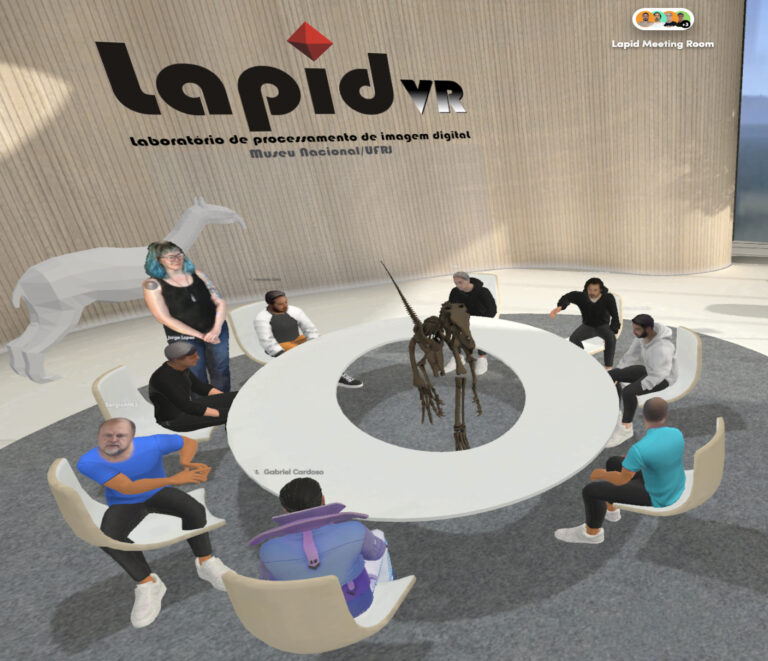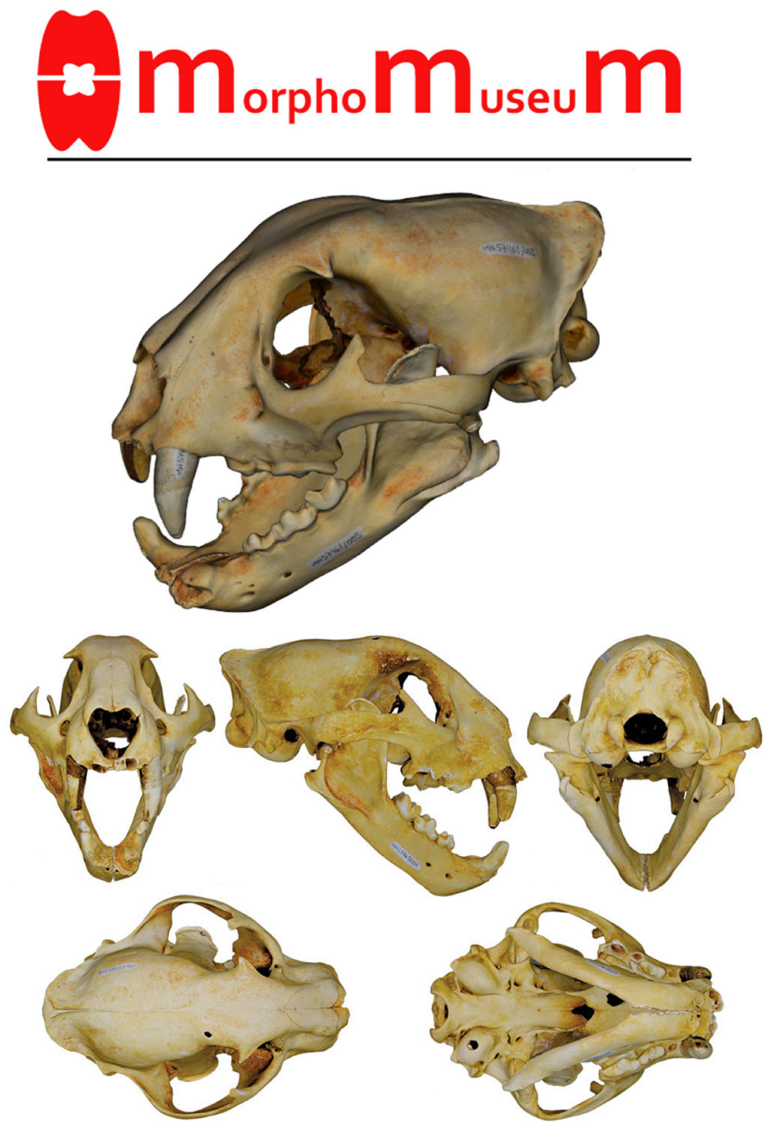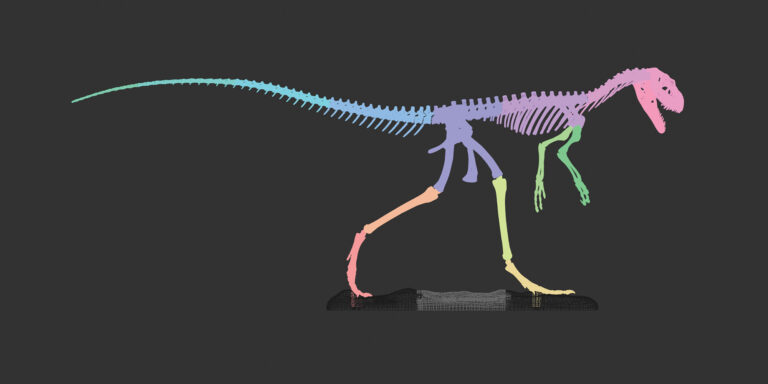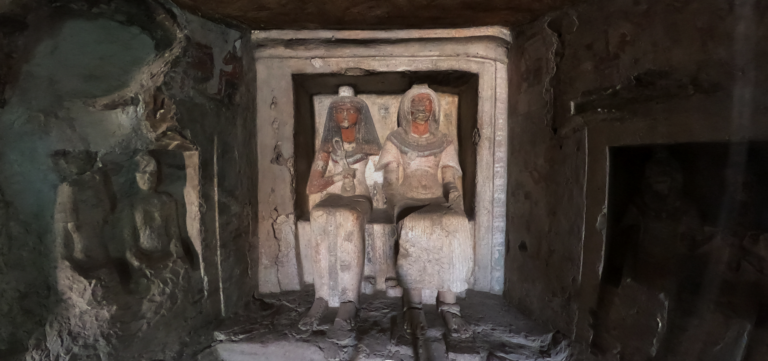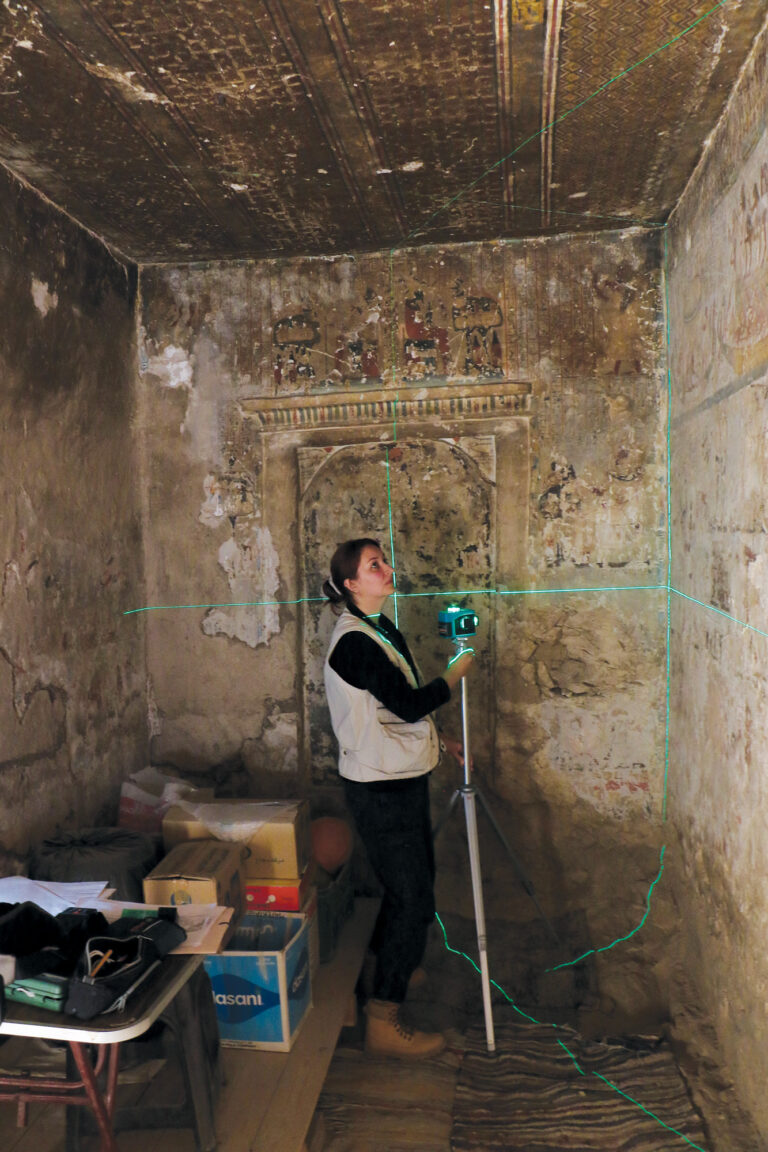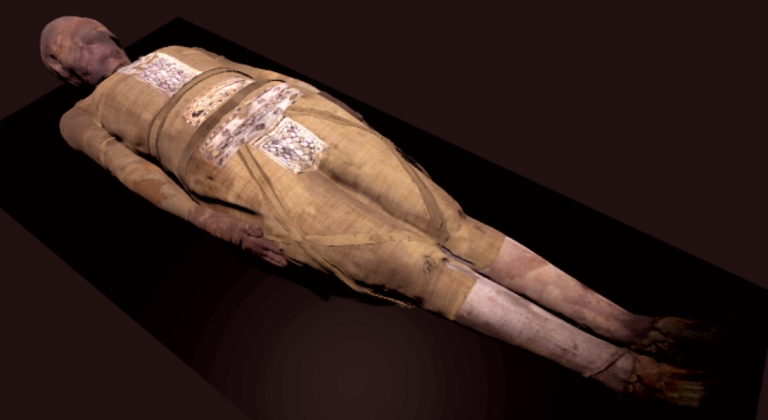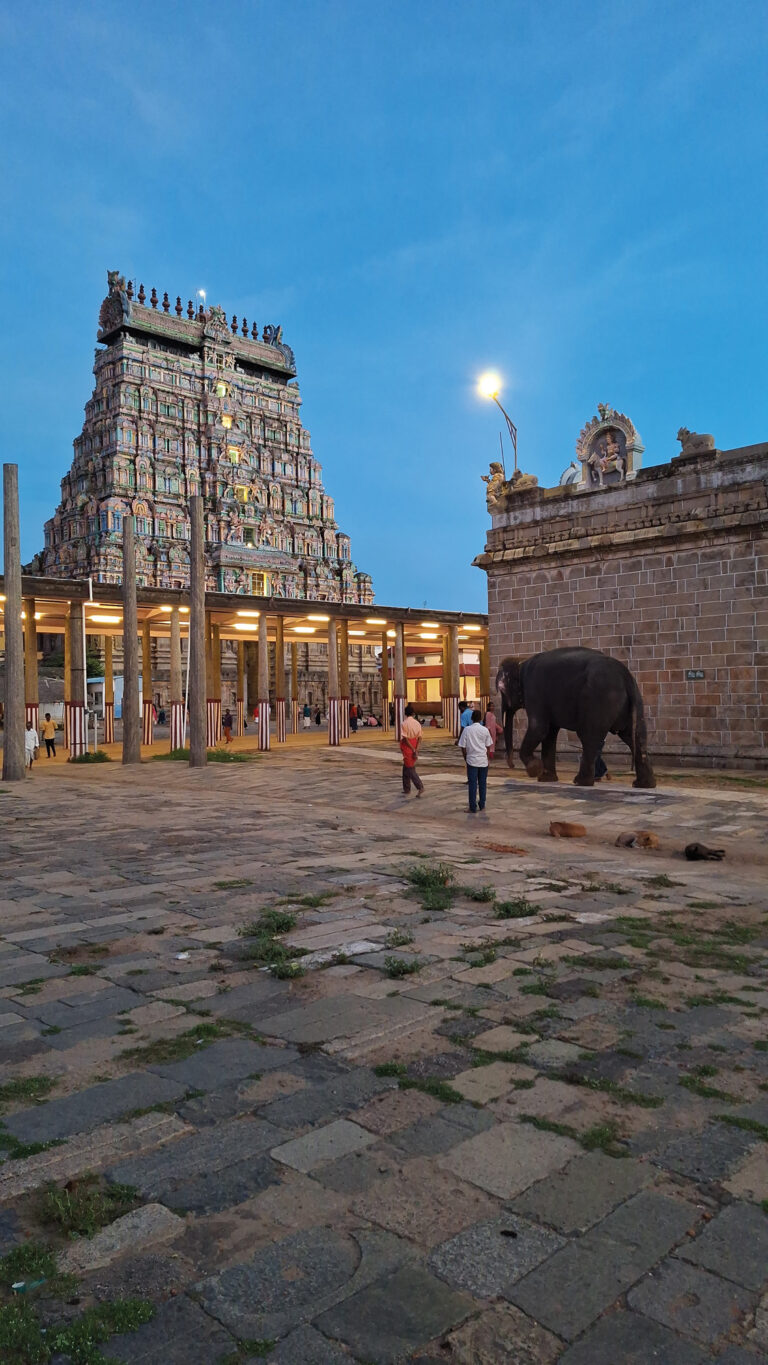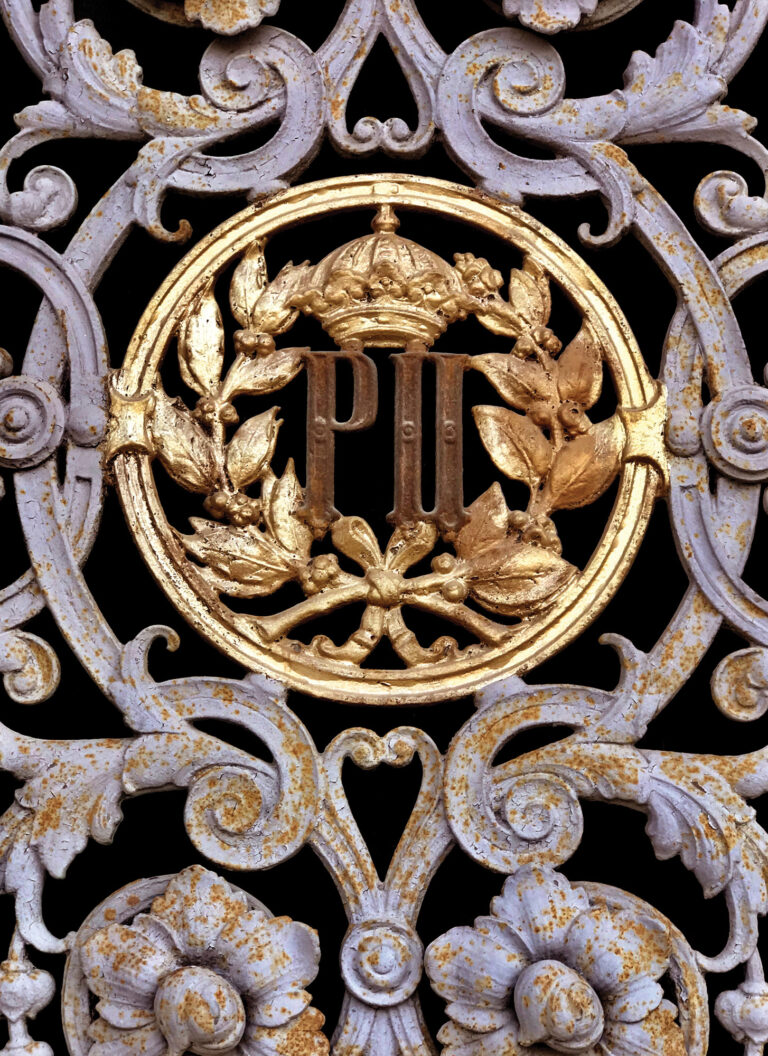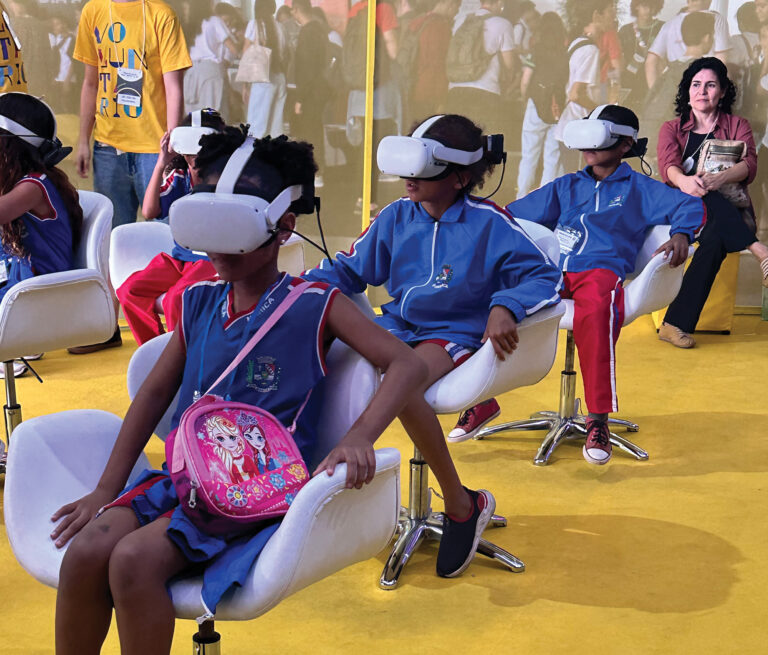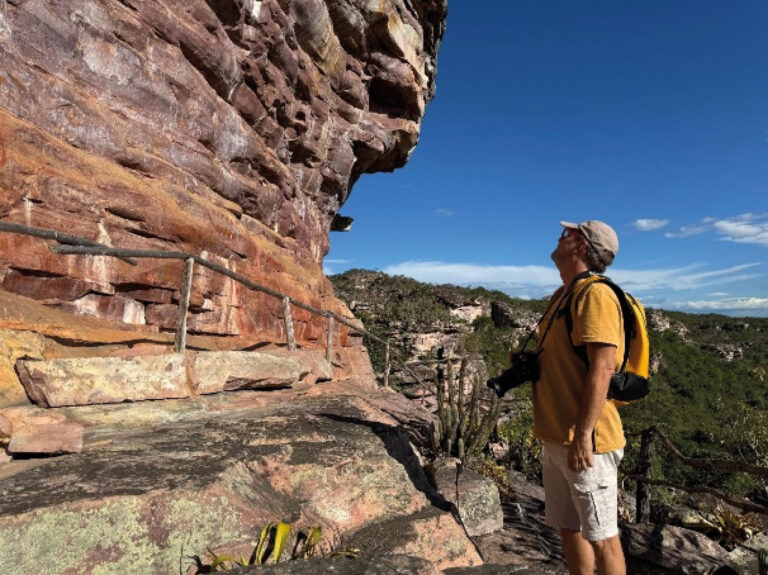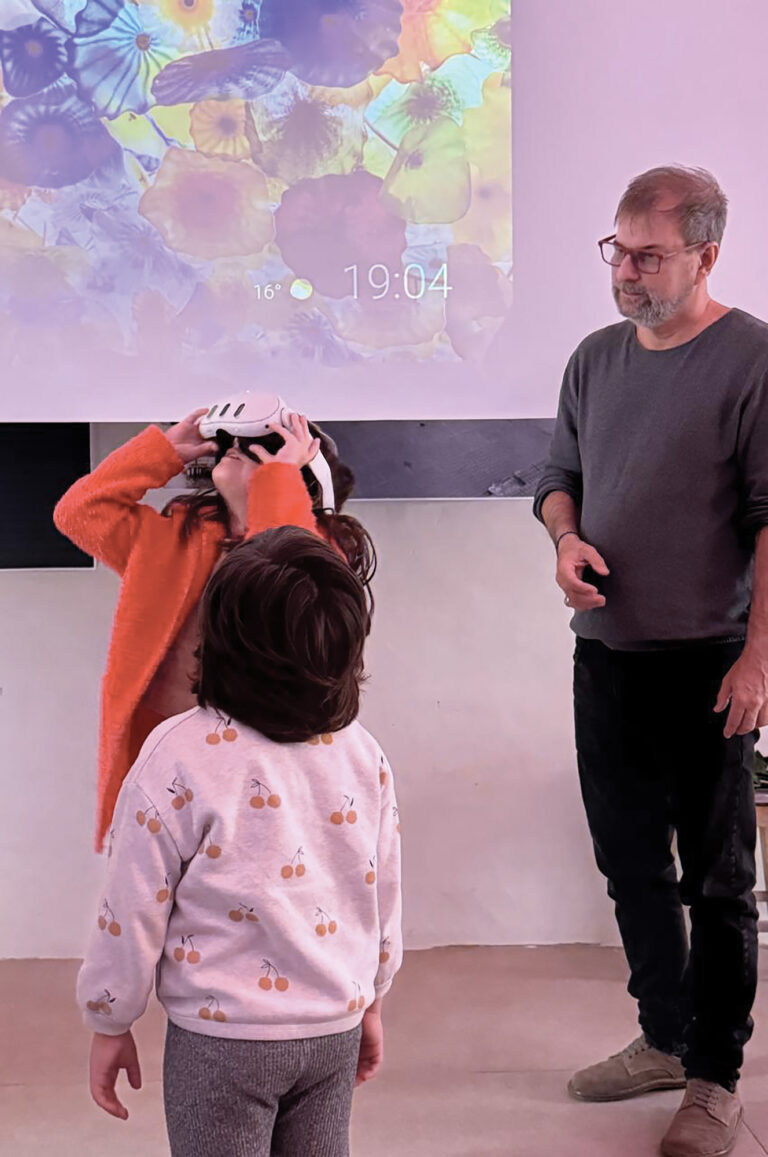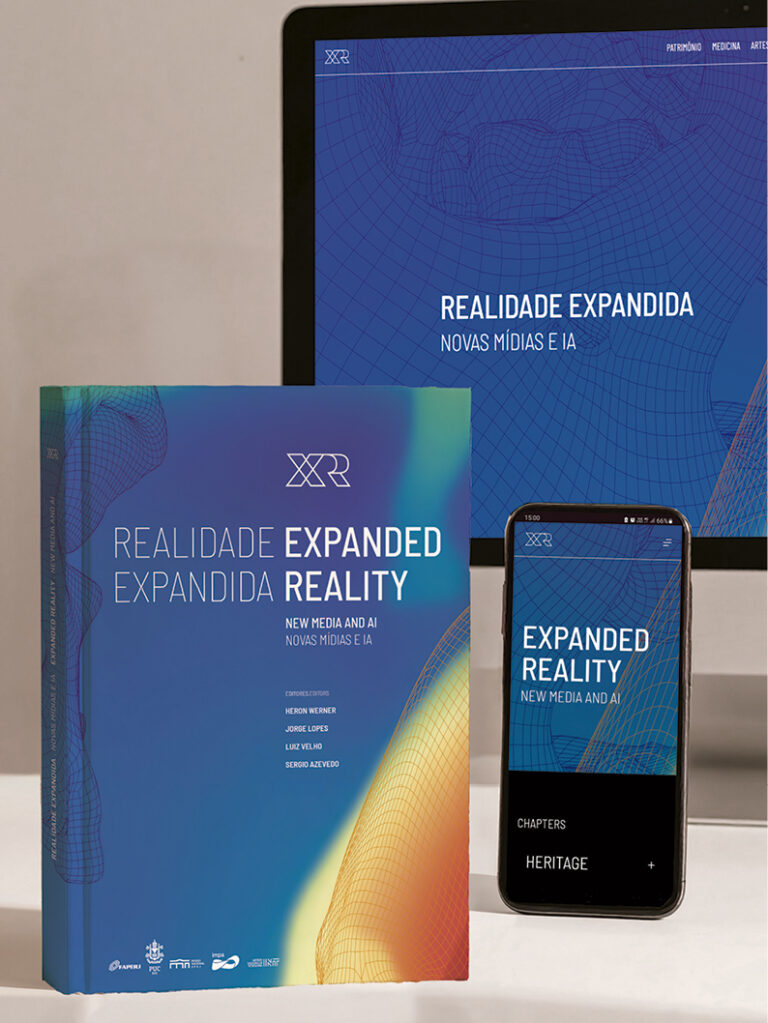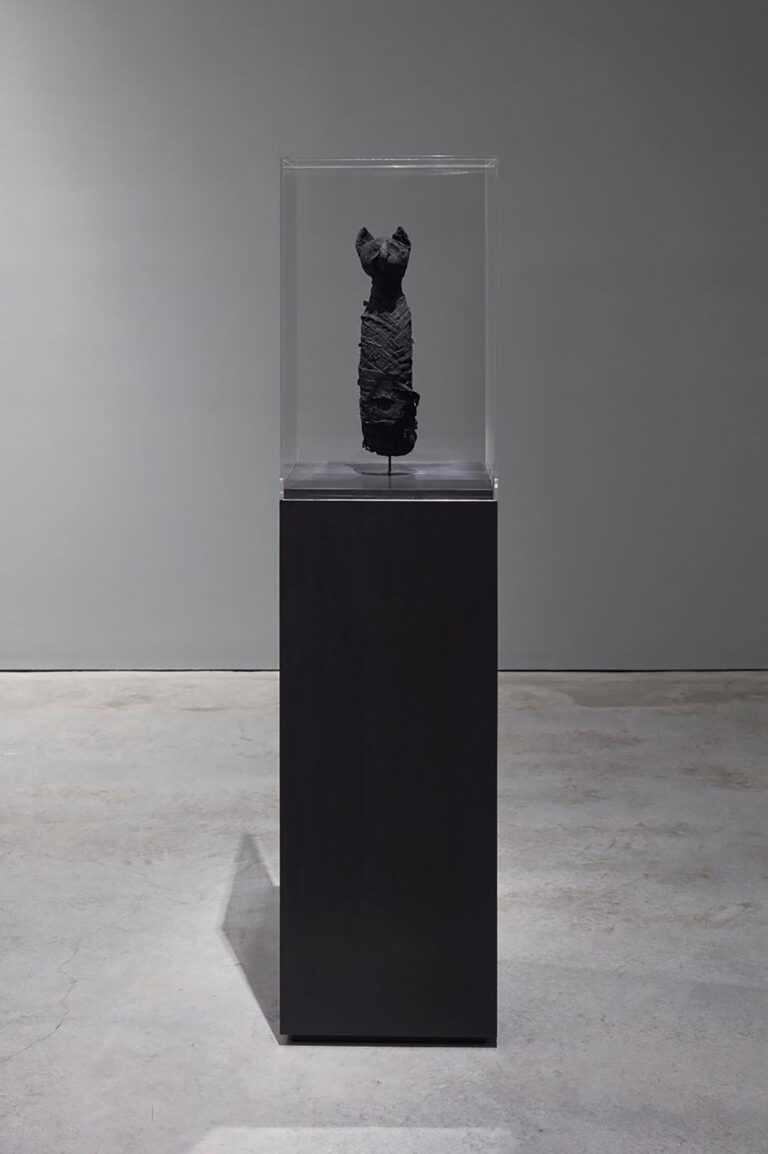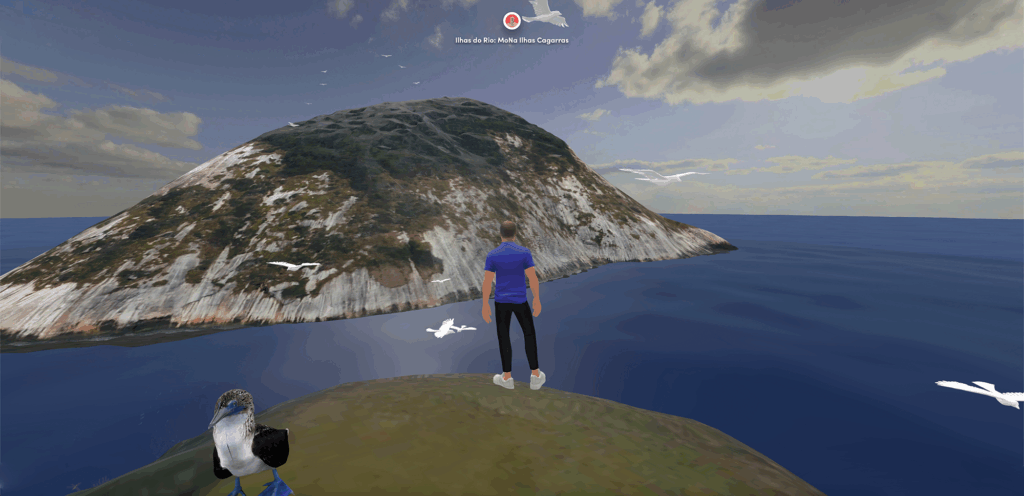
on the coast of Rio de Janeiro.
This text reports on some of the activities developed by the research team of the Laboratory for Digital Image Processing (LAPID) with the aim of disseminating through the metaverse the teaching and research activities developed with the scientific-cultural collection of the National Museum/UFRJ. These activities are directly related to the link between LAPID and the Space-XR project: Research in Shared Metaverses. This project also involves the Biodesign Laboratory linked to PUC-Rio, as well as Visgraf at the Institute of Pure and Applied Mathematics-IMPA/MCTI. In this project, LAPID coordinated the Scientific-Cultural Heritage line.
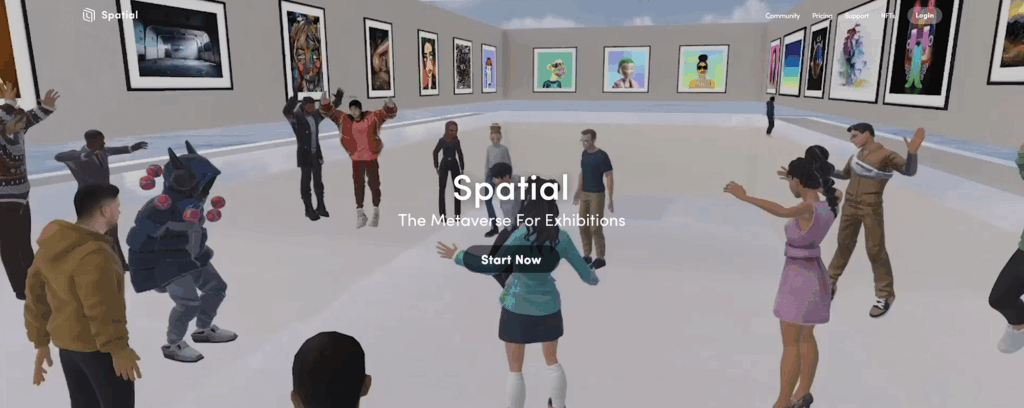
The activities developed in this area began with the selection of the mediation devices and the platform for delivering the data. We chose the Quest 2 Virtual Reality headsets due to their practicality (unlike other previously tested devices), this model does not require a physical connection via cables to data sources (desktop) or power (external power supply). The Quest 2 is more affordable, relatively small, lightweight, and reasonably comfortable, making it well-suited for physical use, especially compared to similar devices available on the market (note: like all technologically advanced devices, Virtual Reality headsets are continuously evolving, with new alternatives constantly emerging, such as the recent launch of the Quest 3, Quest Pro, and other intermediate devices).
At the same time, in collaboration with colleagues from the Space-XR project (https://space-xr.com/), we began analyzing possible virtual platforms (VELHO et al., 2022). The Spatial platform (Spatial.io) was initially chosen because of its features.
virtual spaces
Our first contact with this (virtual) reality was through the space called XR Showcase and its parallel XR Meeting Point, both on the Spatial platform, where we held our weekly Space-XR project meetings, an inexhaustible source of sharing experiences and information. The next step was to incorporate our digital files (processed in applications such as Photoshop, ZBrush, Blender, etc.) into the models (templates) provided by the Spatial platform, and, then, to customize our own spaces.
Below we present the main spaces created as part of this initiative, always with the collaboration and suggestions of Space-XR colleagues:
Lapid Meeting Room: A room assembled in the Spatial Boardroom template and following the XR Meeting Point line, this room was created to bring together the Digital Image Processing Laboratory (LAPID) team for their work meetings in a virtual environment due to mobility restrictions imposed by the Covid-19 pandemic. The room was later relocated due to restrictions imposed by the Spatial platform and renamed Lapid Meeting Room 2.
LAPID Park: Modelled on a customised environment, this space is designed to showcase LAPID’s many areas of activity, particularly in the fields of Palaeontology, Geology, Archaeology, Egyptology, Meteoritics, Zoology, Ecology, Art, Dance, and more. It serves as a showroom for activities already carried out and as a point of departure and access to all other spaces created by the laboratory. The space is divided into several modules, each with a theme, in addition to a central module where visitors can learn more about LAPID. Visitors can enter a cave to explore the palaeontology and geology pavilion or board a capsule that takes them on a journey through the sky to space, where the astronomy pavilion is located. The pavilions and their layout are based on the octahedron shape of the Laboratory’s logo.
Quaternary Megafauna: This space, assembled in the Spatial Outdoors template, aims to present three-dimensional models of Brazilian megafauna, along with various palaeontological information about these fossils.
Tartaruguito: This space is modelled in an environment that reproduces the three-dimensional digitization of the fossil outcrop known as Tartaruguito, located in Pirapozinho (São Paulo).Visitors can virtually walk around the outcrop, accompanied by images showing the work of palaeontologists from the National Museum on the site.
Grillo’s Memories and Works: Developed using the Obsidian Gallery template in Spatial, this space presents a summary of the projects in which researcher Orlando Grillo participated, including projects in Paleontology, Geology, and Meteoritics, as well as the results of his research line in biomechanics and 3D digitization work of large natural structures such as the Natural Monument of the Cagarras Islands and the rocky shore of Arraial do Cabo.
Lobo’s Gallery: Developed using Spatial’s Isle Gallery template, this space presents a summary of the projects developed by researcher Leonardo Lobo, covering aspects mainly related to paleomastozoology.
LAPIDVR Gallery: In another attempt to customize an environment with a new architectural design, this space presents two closely related exhibitions. The first, occupying the outer ring of the space, is entitled ‘In Joy and Sadness’ and presents images and videos obtained by Sergio Azevedo and his wife and partner, Luciana Carvalho, during their joint work on the National Museum’s Collection Rescue Team. The second exhibition, located in the central hall of the gallery, is entitled “Mãos do Resgate” (Hands of Rescue) and presents, through photographs by Marcos Gusmão, Sergio Azevedo and Luciana Carvalho, the hands of the Collection Rescue Team members in their hard work of rescuing the pieces after the fire. The gallery is presented in an environment (skybox) representing Quinta da Boa Vista, in the Imperial district of São Cristóvão – RJ, where the Imperial Palace, the main headquarters of the National Museum, is located.
Rescue Exhibition – Marcos Gusmão: This space, assembled using Spatial’s Aeries Gallery template, aims to present images by photographer Marcos Gusmão, captured while documenting the work of the National Museum/UFRJ Collection Rescue Team after the tragic fire of September 2018.
Formatae ignem: Assembled using the Isle Gallery template in Spatial, this space is an exhibition that mixes art and memory by presenting forms created by the action of the fire during the fire that hit the National Museum in September 2018. The pieces, made of metal, glass, wood, and plastic, were collected during the work of the National Museum’s Collection Rescue Team. For the organisers, setting up this exhibition had a strong psychological impact, in the sense of rescuing and reinterpreting forms from such a significant environment in which they had lived for more than 30 years, preventing everything from ending up in the rubbish dump.
Conservation Center: Modeled in a customized environment, this space presents different stages of recovery for pieces from the scientific and architectural collection of the “Palácio de São Cristóvão” after the fire.
Museum of Ashes Space – Vik Muniz: This was the first experience in modeling a customized environment in collaboration with Vik Muniz Studios. The space presents, in virtual reality, visual artist Vik Muniz’s Museum of Ashes exhibition, which was physically assembled at the Sikkema Art Gallery in New York in 2019 and features artworks created by the artist using debris salvaged from the rubble of the National Museum fire.
Archeoverse – Quinta da Boa Vista: Modeled in a customized environment, this space allows visitors to explore the archaeological excavations carried out during the recovery process of the “Palácio de São Cristóvão” after the fire.
Lapa da Zilda em Carrancas-MG: Assembled using Spatial’s Outdoors template, this room aims to provide visitors with a tour of the archaeological site of Lapa da Zilda in the municipality of Carrancas, MG, featuring its caves and cave paintings.
Infinite Space: Developed in a customized environment that evokes a futuristic space journey, visitors walk along a glass bridge in the shape of an infinite loop, surrounded by animated three-dimensional models of items from the National Museum’s meteorite collection. There is also a gallery in the form of a futuristic space platform where the panels of the exhibition “Meteorites: From Genesis to Apocalypse,” which was inaugurated at the National Museum in 2015, are presented.
Rio Islands – MoNa Cagarras: Developed in a custom environment that reproduces the structure of the Cagarras Islands off the coast of Rio de Janeiro (created through photogrammetric scanning of the islands), this space was developed in collaboration with the “Ilhas do Rio” (Rio Islands) project team. It presents aspects of the archipelago’s fauna, including underwater fauna. Visitors can climb the islands, “swim” with fish and turtles, and “sail” in boats.
Dance Space: Created using the Spatial’s Isle Gallery template and originally developed for presentation at the 22+100 LABAN Meeting and the Modernist Project in June 2022, this space uses images, videos, and photographs of the works of Rudolf Laban, Irmgard Bartenieff, and Helenita Sá Earp, exponents of the art of dance and movement. Additionally, three-dimensional models of the platonic solids used by Laban in his scales and a dancing avatar (product of the joint work of Bernardo Alevato and Taianne Lobo), inside the octahedron solid were included.
Indian Room: Modeled in a customized environment, the room is a parallel activity to Thaisa Martins’ Ph.D. program. It is intended to present aspects related to the architectural structure of an Indian temple. The room is under development, and models representing different characteristics related to the eight classical Indian dances will be presented.
MusasMN: Assembled in Spatial’s Outdoors template, this space aims to present the three-dimensional models of the statues restored after the 2018 fire that decorate the top of the front facade of the “Palácio de São Cristóvão”, the headquarters of the Museu Nacional/UFRJ.
Arqueoverso – Greek Ceramic Experience: Modeled in a customized environment, this space was developed to present educational material allowing visitors to familiarize themselves with the processes of creating the different ceramic utensils developed by Greek culture. The space supports the teaching of the discipline “Ancient Greek Iconographic Analysis” in the History course at UFRJ.
conclusion
The use of a platform to provide three-dimensional content in the metaverse, through the development of spaces dedicated to the dissemination and popularization of scientific-cultural heritage linked to the teaching, research, and extension activities of the National Museum/UFRJ, has opened new avenues for scientific and artistic research and dissemination. This initiative also marked the beginning of exploring the Virtual Reality environment, an increasingly important means of interaction that advances methodologies for the dissemination of science and knowledge. Initially, the use of the Spatial platform fully met its intended objectives. However, over time, the platform introduced several restrictions that made access to certain spaces difficult or even impossible. The team is currently investigating ways to circumvent these restrictions or move the files to alternative platforms that allow for the unrestricted dissemination of content.
References
GRILLO, O.N.; LOBO, L.S.; AZEVEDO, S., 2020. LAPID: Using 3D to Recover Heritage Lost in a Fire. Sketchfab Blog. Cultural Heritage – Science Spotlight, 20 January 2020. Disponível em: https://sketchfab.com/blogs/community/lapid-using-3d-to-recover-heritage-lost-in-a-fire/ Acesso em: 24/04/2025.
LOBO, L. S.; GRILLO, O. N. & AZEVEDO, S. A. K., 2021. Morfologia, Pandemia e 3D. Arquivos de Zoologia, 52(2):33-40.
LOPES, J.; AZEVEDO, S. A.; WERNER Jr., H. &, BRANCAGLION Jr., A. 2019. Seen/Unseen. RioBooks, Rio de Janeiro, 244p.
LOPES, J. R. L.; BRANCAGLION Jr., A.; AZEVEDO, S. A. K. & WERNER Jr., H., 2013. Tecnologias 3D: desvendando o passado, modelando o futuro. Editora Lexikon, 248p.
SHORE, M., 2015. The Curious History of Virtual Reality. AbelCine Tech News. Disponível em: https://www.abelcine.com/articles/blog-and-knowledge/tech-news/the-curious-history-of-virtual-reality Acesso em 24/04/2025.
TUSTAIN, J., 2019. Tudo sobre realidade virtual & Fotografia 360º. Editora SENAC, São Paulo, 160p.
VELHO, L., 2022. Metaverse. Technical Report TR-22-03, IMPA/MCTI. Disponível em: https://www.visgraf.impa.br/Data/RefBib/PS_PDF/tr-03-2022/tr-03-2022.pdf Acesso em: 24/04/2025.
VELHO, L.; LOPES, J.; AZEVEDO, S.; ALEVATO, B.; RIBEIRO, G.; DUARTE, M. & ARCOVERDE, V. – Spece XR: Plano de Pesquisa. Technical Report TR-22-01, IMPA/MCTI. Disponível em: http://space-xr.com/wp-content/uploads/2022/01/tr-01-2022-s.pdf Acesso em: 24/04/2025.
WERNER Jr., H. & LOPES, J., 2009. Tecnologias 3D: Paleontologia, Arqueologia e Fetologia. Editora Revinter, 202 p.
